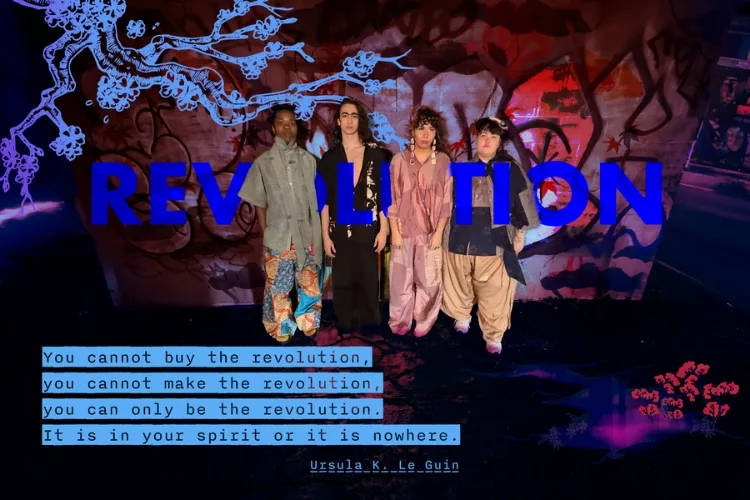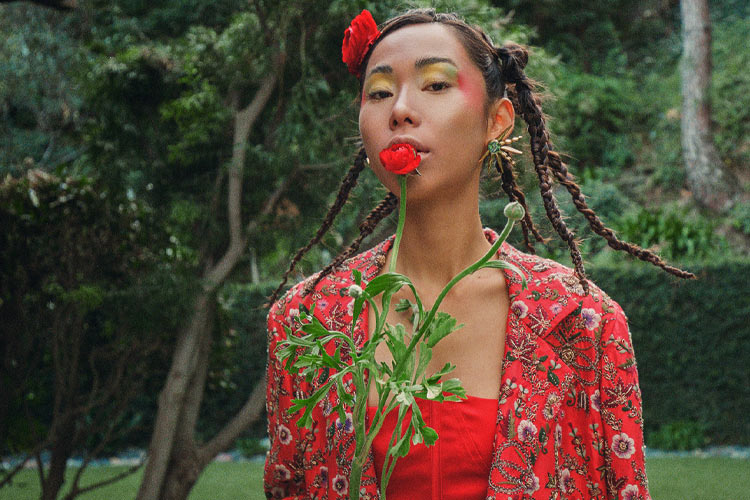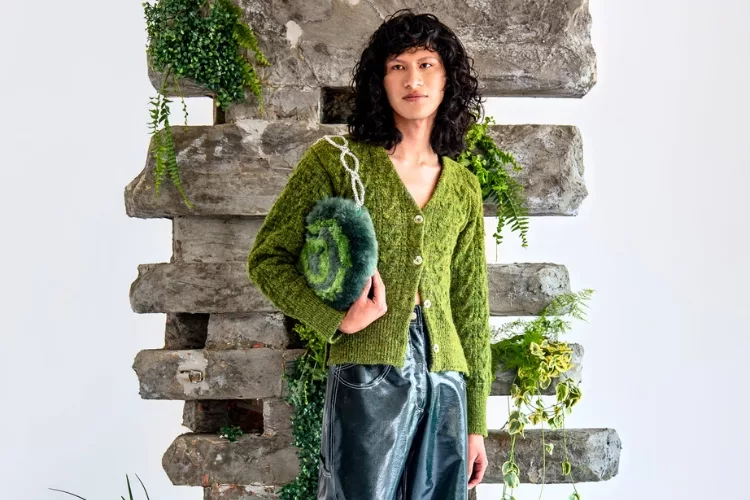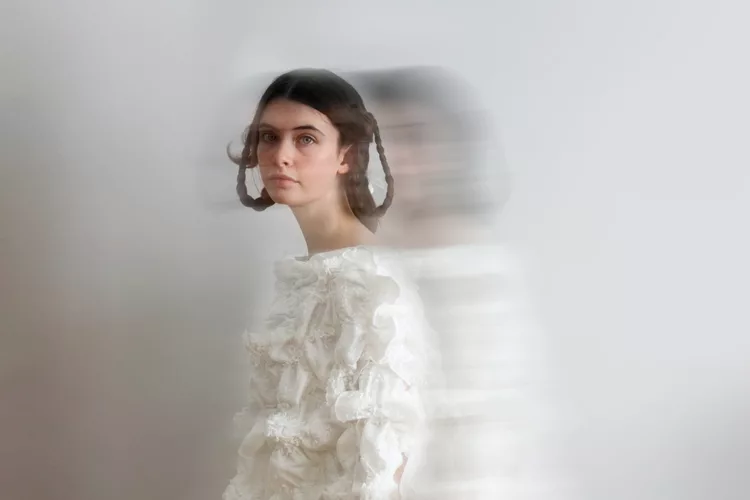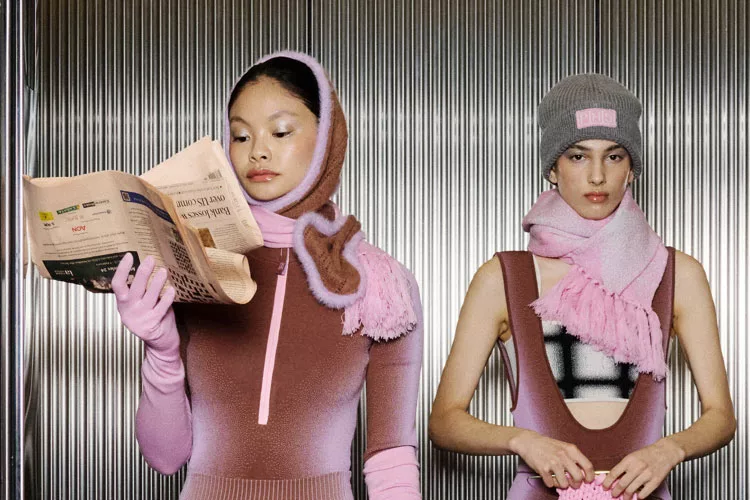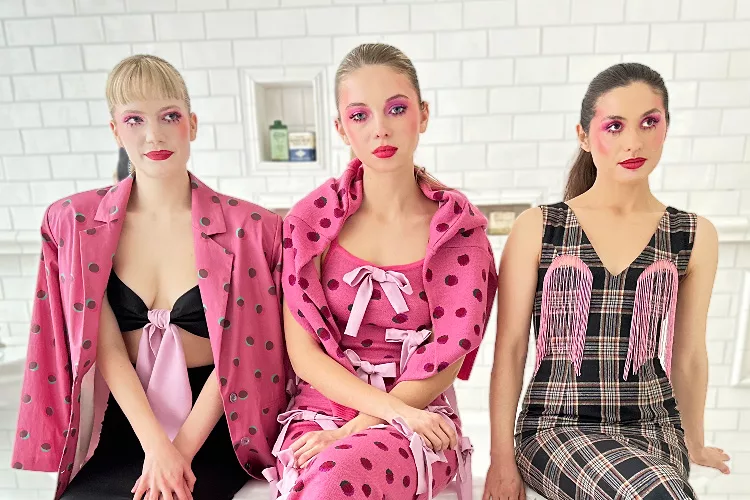Getting to know Simon Ungless: Designer of When Simon Met Ralph, master print maker, reformed educator and part of the original McQueen Team
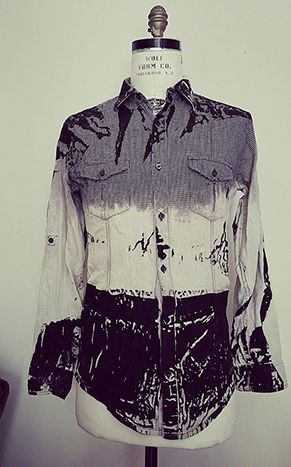
We’ve been highlighting recent college graduates who are hoping to have careers in fashion despite the current state of the world and climate change. Which begs the question: How does one define a “successful career” in fashion –especially beyond being the designer in the spotlight of a major brand? We think a bit of risk taking along with serendipity and finding ways to hone your own craft are elements for success. And are all part of what brought Simon Ungless to where he is now.
Simon has been in the world of fashion since perhaps before you were born. Starting with befriending and collaborating with a then unknown Alexander Lee McQueen at Central Saint Martins to running the fashion department at Academy of Arts University in San Francisco to returning to London where, among other things, he’s again collaborating with McQueen (the brand).
Throughout it all he has maintained a creative process of his own. One which gives new life to older garments through his unique touch. This work falls under his label When Simon Met Ralph. Read on to learn the genesis of that name and take a little inside peek into the fashion journey of Simon Ungless, mostly in his own words.
Part 1 – A Serendipitous Decision aka How he got his start
My undergrad is in fashion and textiles from the University of East London. Then I worked for a couple of years in the industry as a freelance designer. I was based in London but worked with companies all over the world. I was offered a place at St Martin’s when I graduated, but because I was working, I thought about getting some work experience first. And they allowed me to defer and I deferred for two years.
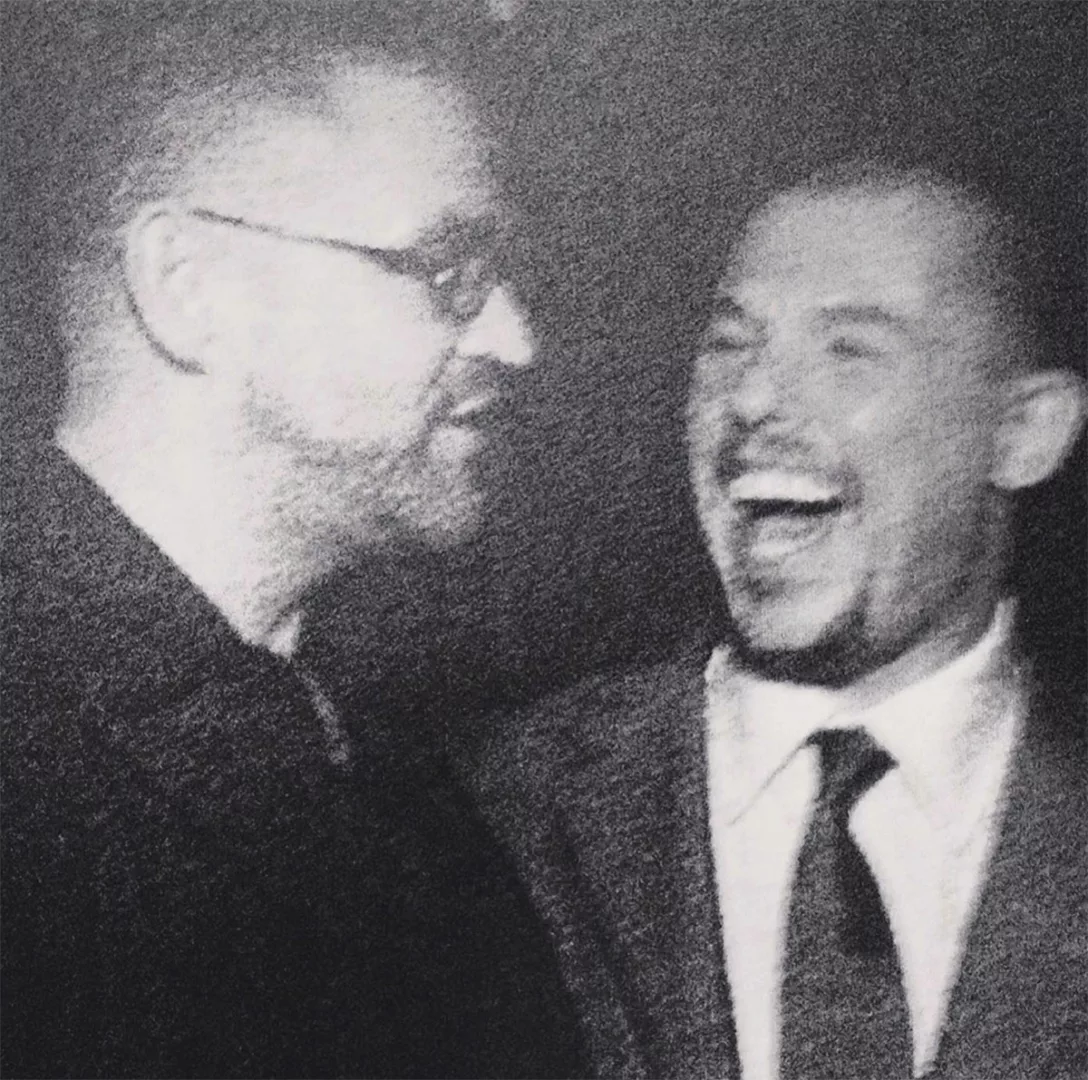
So I started St Martin’s in 1990.
That was lucky because then my classmate was Lee McQueen. And we very quickly became friends and collaborators on school projects.
He moved into my house and at the end of school, we just continued to work on things. By day, I went back to working in the industry. But at night and the weekends, Lee and I created things for Isabella (Blow). And looks for Stella Tennant’s first shoot. And other pop stars and stylists. That gradually built itself into a collection.
London in the ‘90s
I’ve been communicating with a friend this morning about that particular time in London. And when I look back, because of what was happening politically, it was really exciting. There was no real significant industry. There were no jobs as such for us. There was a lot of frustration and not much going on. It was one of those times where great things are born out of the necessity to do something – like the late seventies with punk. So we had to do it ourselves, didn’t we? Or we’d not survive. There was McQueen. And Owen Gaster, Nicholas Knightley–these designers that had that moment. Yeah, it was a really vibrant time.
From London to San Francisco
A bit after graduating from St Martins I was asked if I would be the print and dye technician for the fashion program. Not only would I get a salary, we made a deal that I would be able to use the facilities to create fabrics for McQueen. Which was amazing.
And I discovered that I loved being in the studio. I loved working with all these young, talented designers. I’d just come off of a long stint freelancing for a (trend) forecasting company which doesn’t exist anymore. We’d done the whole year. And then it came around to doing spring summer again and it was the same shit on a different mood board, right? I mean it was “what’s the floral”, “what’s the ethnic”, “what’s the vintage”? I just thought, God, I can’t do this anymore.
So that whole thing of going to work back at St. Martins was a way to move away from the circus. And then in early ’96, just after Dante Collection, Lee and I began to run the space in Tottenham. It was on the top floor of a warehouse. A really nice space. My plan was to leave [CSM] at the end of the academic year and just work for McQueen. I was doing things for other people as well – that wasn’t ever a problem with Lee.
A few select images of Simon’s work with McQueen in the ’90s
But while I was still at St Martins, I would often print my own clothes, like Readymades. I’m an absolute sucker for Marcel Duchamp. To take everyday objects and modify them, print on them.
So if I can change something very subtly, that’s what I do. And Lee loved it. So this technique got me to start doing it to garments for his collections. We started off with Taxi Driver where he would make something and I would work directly onto the garment.
With another collection, Lee had made this incredible frock coat. And I got to the studio and he said, Oh, can you come and fuck up a bit for me?
And I’m like, No, it’s really perfect. And he said, Go, just fuck it up so do whatever you want. And that was really mixed up, right? But I had a batch of resin and I just dripped resin all over this, this thing. And then they went into the show and the model kind of crunched it all up as she got to the end of the runway.
And it was a moment, you know. So the project of doing something to clothes has been going on for a long time. And I have done it ever since.
At that point Gladys Perint Palmer had been hired as executive director for AAU [Academy of Art University] and she came into St Martin’s to see what textiles were all about and if it was something she needed in San Francisco. I was there and was introduced to her as the print and dye technician. I didn’t register with her at all. I mean, I was in a gray sweatshirt, sweatpants and a tee-shirt with a mop –I was literally mopping. So why would she have a look at me?
But Natalie Gibson said “and Simon produces all of the designs and produces all of the fabrics, the prints for McQueen.” And suddenly she just turned into this completely different person.
And then the next day someone snuck in and offered me the job at AAU in California and I thought, well, that’s somewhere I’ve always wanted to go. A couple of people I truly respected were already signed up to get involved and build this program, a woman called Bobby Hilson, who founded the MA at St Martins and a guy called Ike Rust who taught me and was at Calvin Klein. And he was coming out, too.
So I thought that would be a really great thing to do – for the summer. I’d be back ready in time for the collection and the next show for McQueen.
Summer in San Francisco
I thought a summer in San Francisco, it’ll be just like Baywatch. I had no clue that summer in San Francisco, it’s cold this time of year, the fog and all of that stuff. So, yeah, I came with a bag of stuff, and a plan to be there for three months over that summer. But I ended up staying in California because I had found a really good spot for myself. I found a place I really loved being. I still love it. I’d always been obsessed with that kind of Northern California lifestyle design.
The things that could only come from here. Levi’s, The Gap, The Banana Republic, North Face – those companies, me coming from the UK, they’re kind of idols to me. I didn’t really know that much about them but they were all experts at “the M word” – merchandising. And I wanted to learn that. I thought it would be a great benefit to me when I went back to the UK.
But I didn’t go back.
I was quite convinced I would go back and then I didn’t. And then Lee came here for that first Christmas and we had a blast. By then I think he’d been hired at Givenchy. So I went back about February, March in time for the first ready to wear in Paris. And worked with him and Katy [England] and the crew actually on their first ready to wear. And then I realized that I didn’t want it. It was not the world that I wanted to be in at that time.
Simon at AAU and on fashion education
I came back here and carried on. And I saw results very quickly with the students.
It made me realize it doesn’t matter where you are. You don’t have to be in New York or London or wherever –to be in the fashion capital, to run the fashion school. To have a fashion school, you just have to have the right facilities, the right support, the right faculty, the right curriculum. And the students will respond and the students will flourish.
My first title was textile co-ordinator. They knew that they wanted textiles. Part of what they really wanted was the St. Martins ethos hammered into the formula of American fashion education. It’s more structured. This is a much more structured delivery of content. But as time goes on, everything has become more structured, more sort of formal. I loved the philosophy of the school then. It was a very, very, very dynamic school, very driven, focused on change. Very focused on a student centric education. And focused on being the best. Focused on coming from the school that nobody had ever heard of to be the best, you know. And I thought, Oh, I can get behind this. Plus, the team I worked with was amazing.
I was there for several years and over time fashion education has changed a bit. Like all higher ed it seems to become more a business and about student retention over actual educating. So I knew I needed a change.
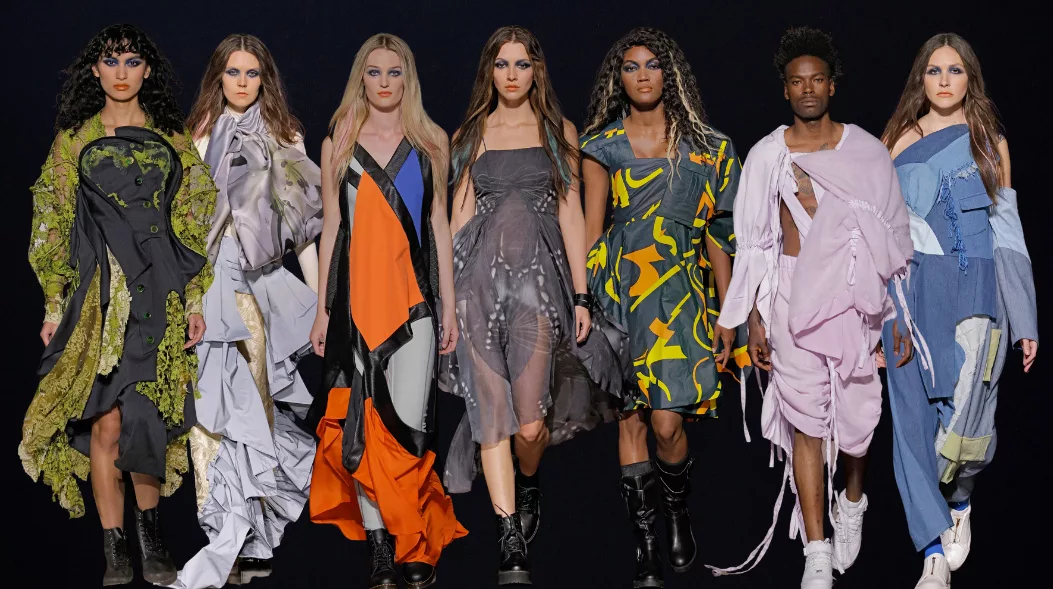
I had decided the 2020 undergraduate show in San Francisco was going to be my last semester. I was going to go off and really work on my own thing because that’s what I wanted to do. And then, of course, early in 2020, COVID hit and I thought, God, I can’t leave now. That’s a really shitty thing to do, right?
So I stayed on until 2022 and the 2022 presentation was a really great show.
When Simon Met Ralph
When Simon met Ralph is a project I’ve been doing for years related to those early Readymades.
The name has a bit of a story behind it.
I did an interview for a publication in San Francisco about the work I did with clothes. I happened to be wearing this really classic men’s pinstripe business shirt. I had dipped it to fade the color out of it. So the blue halfway down became this really beautiful pink.
And the journalist said, Well, what’s it called? And I looked at this and I said, “when Simon met Ralph.” And that’s stuck. So for me, that’s great. I have a name. But it’s grown quite a bit over the last through the pandemic. Actually, the pandemic really took that to another place.
During that time I did a 30-day creative challenge through Instagram, really mainly for the students, because they didn’t have the facilities, they didn’t have all of the equipment.
So I took things –just stuff I had around the house to show them that anything can be a dress form. You can drape on anything. That reconnected me into some of my old friends in the industry that are still about. Sarah (Burton) asked me to collaborate on the McQueen Creators project and it brought me back to all the rule breaking, all the emotions, all the passion of just making.
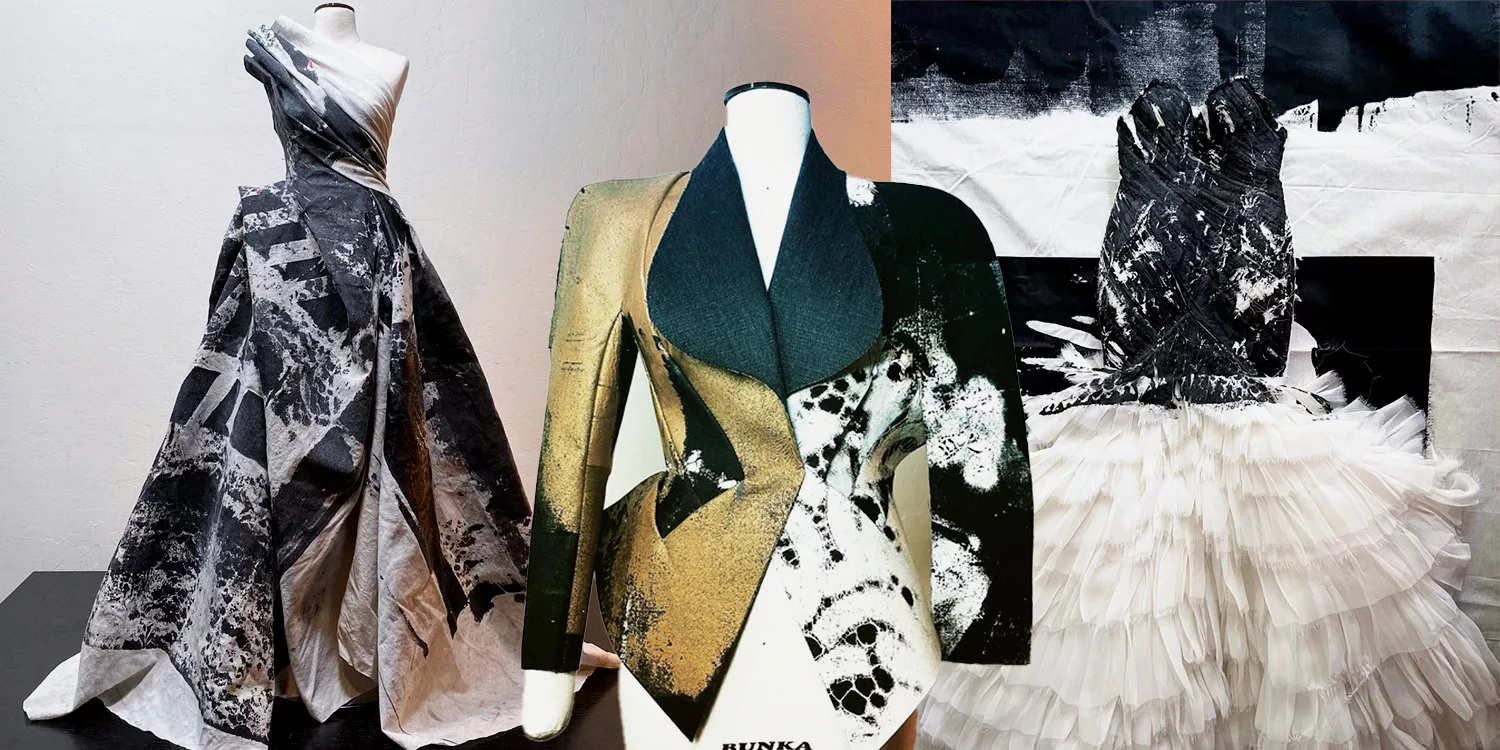
And I started thinking, Oh, there might be more life in this. You know, I have this huge archive of things I’ve worked on and it’s something that I really believe in. If I can take things out of the landfill pile and put them back into circulation, and if I can use it as a tool for education and I can bring everything together, then why not? So that’s been really exciting.
See more of When Simon met Ralph here, and here
Listen to his interview with Zara Korutz on Unbiased Label podcast
Also if you’re a recent grad consider entering the ArtThread Competition in Fashion, Accessories and Textiles where Simon is one of the esteemed judges.
–Katya Moorman
More Articles







